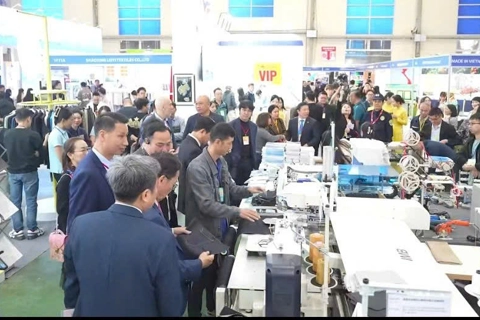Hanoi: Some restrictions relaxed to weaken Covid-19's economic blow
Hanoi said it needs to relax restrictions in the safe zone to continue economic activities.
Hanoi will relax some restrictions with workers beginning to returning to workplaces in safe areas on September 6.
A number of areas, where are designated safe zones, will be put on social distancing under the Government’s Directive 15 that requires suspension of social events, no gatherings of 20 people or more in one place, and of 10 people or more in public.
The safe areas, called Zone No.3 or “green zone”, cover mainly suburban districts where are home to many industrial parks and processing zones of the city, including Ba Vi, Son Tay, Dan Phuong, Thach That, Quoc Oai, Chuong My, Ung Hoa, My Duc, and Phu Xuyen.
This zone focuses on handicraft, industrial, and agricultural production.
| Deputy Secretary of the municipal Party Committee Nguyen Van Phong at a meeting on September 3. Photo: The Hanoi Times |
Zone No.3 is the lower-risk area in the list of the three zones classified in a document by the Chairman of the municipal People’s Committee, Chu Ngoc Anh, on September 3.
Zone No.2, or “orange zone” is a low-risk area, meanwhile Zone No.1, or “red zone” is a high-risk area where is placed under the lockdown associated with the Government’s Directive 16 mandating stay-at-home order except for emergencies and purchase of necessities.
Areas that are subject to the “red zone” including inner districts of Ba Dinh, Hoan Kiem, Dong Da, and Hai Ba Trung and other districts of Tay Ho, Thanh Xuan, Ha Dong, Hoang Mai, Thanh Tri, and part of five districts of Nam Tu Liem, Bac Tu Liem, Hoai Duc, Thanh Oai, and Thuong Tin.
This zone might be subject to restrictions tougher than Directive 16, according to the document.
According to Hanoi’s authorities, the classification is aimed to tighten control over the high-risk zone and prevent cross-region transmission.
| Associate Professor Tran Dac Phu. Photo: MoH |
To ensure the implementation of safety rules in each zone, the city will set up checkpoints managed by police, army, and health workers. The checkpoints will work from September 4.
To facilitate the travel of residents, the city’s police will provide travel permits with a QR code.
Six groups of people who are eligible to go out include state employees on duty and those who work for foreign missions and international organizations; individuals working in essential sectors; those participating in the pandemic fight; those working in the media industry; those in emergencies, for necessities and for flights; and individuals conducting essential work.
Hanoi has imposed partial lockdown since July 24 when it recorded dozens of cases per day. As of September 3, it recorded more than 3,600 infections.
| Relocating residents in Thanh Xuan District, Hanoi. Photo: Khanh Huy/ The Hanoi Times |
Commenting on the pandemic status-based classification, Associate Prof.Tran Dac Phu, senior advisor to the Vietnam Public Health Emergency Operations Center (PHEOC), said it’s a necessary move as the pandemic situation in the city remains “complicated”. Infections have been reported in the goods supply chains like wet markets involving sellers, he explained.
Imposing restrictions or not does not depend on only the number of infections but the “possibility of controlling the pandemic.” It means that the pandemic situation inside and outside the city, the professor told The Hanoi Times.
Notably, it needs to evaluate the pandemic movement in each area and sector to have a specific classification. By doing so, the local government will decide whether they tighten or restrictions, he said.
The classification becomes very important since it helps residents go back to normal and resume economic activities, Prof. Dac Phu said. Nonetheless, he stressed that the anti-pandemic mission remains Hanoi’s top priority.
Regarding the relocation of residents in the Thanh Xuan Trung infection chain in Thanh Xuan District, Hanoi, he said it’s critical in the face of the Delta variant.
Relocating residents out of the affected areas will prevent cross-infection in the places where record-high population density and poor hygiene conditions.
Stressing the importance of relocating, Prof. Dac Phu took note of quarantine, saying that it’s necessary to gather family members to limit communication in centralized quarantine facilities.
To prepare for the worst scenario case, the city has updated medical facilities for the treatment of 20,000 cases and improved quarantine capacity to accommodate 70,000 people, Deputy Secretary of the municipal Party Committee Nguyen Van Phong said on September 3.

.jpg)
.jpg)
.jpg)










